三年级英语上册 Lesson 11(1)课件 陕旅版
文档属性
| 名称 | 三年级英语上册 Lesson 11(1)课件 陕旅版 | 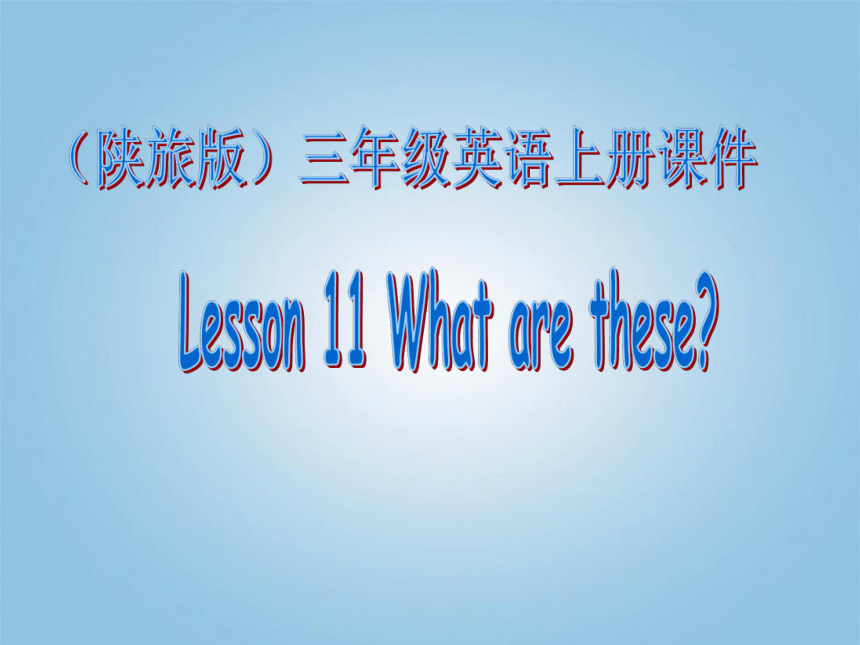 | |
| 格式 | zip | ||
| 文件大小 | 3.5MB | ||
| 资源类型 | 教案 | ||
| 版本资源 | 陕旅版 | ||
| 科目 | 英语 | ||
| 更新时间 | 2013-02-19 11:00:10 | ||
图片预览


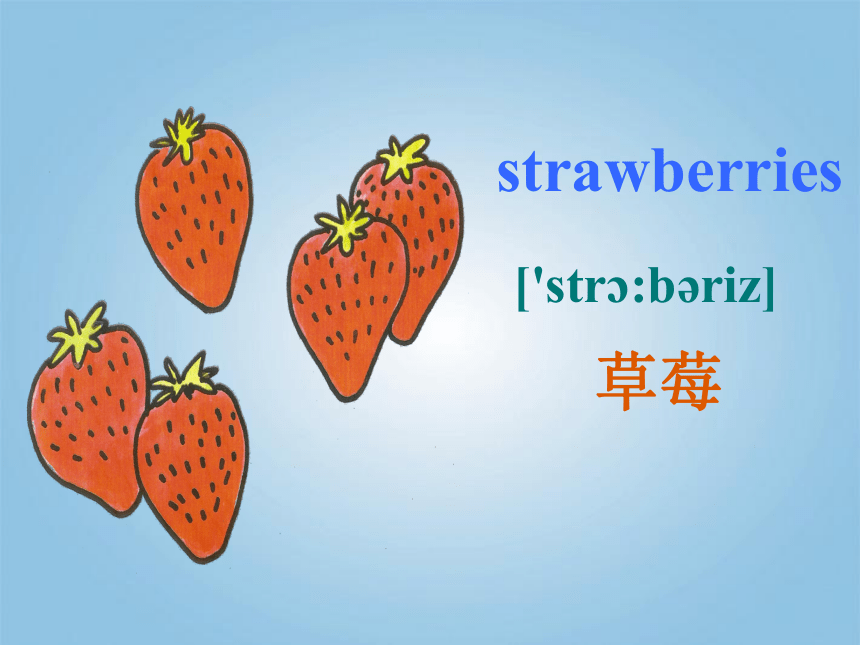
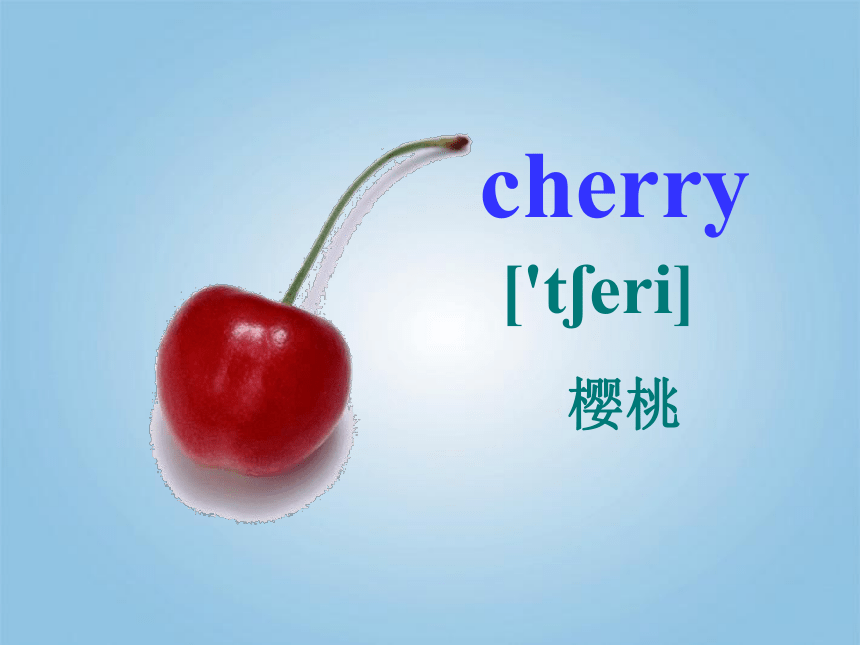
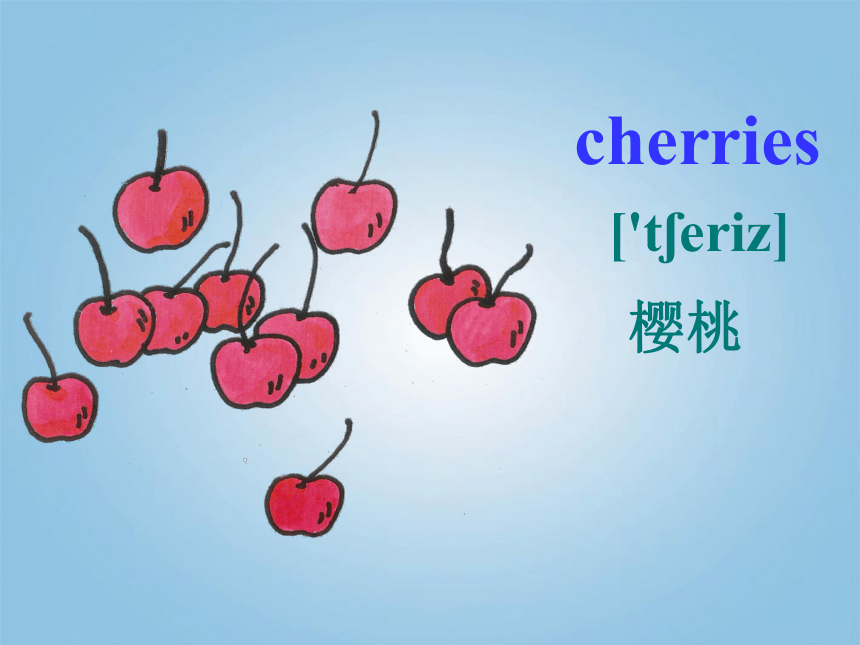

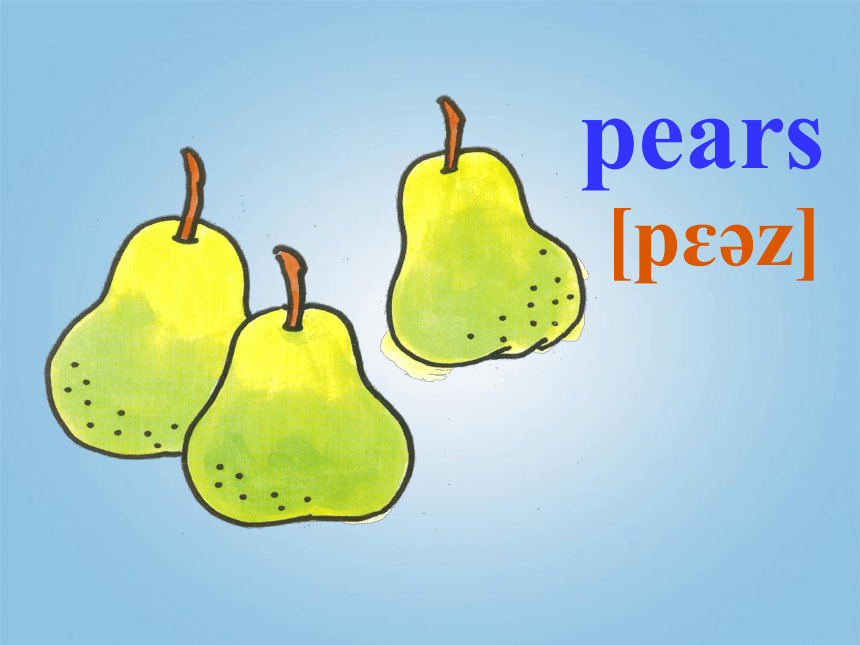
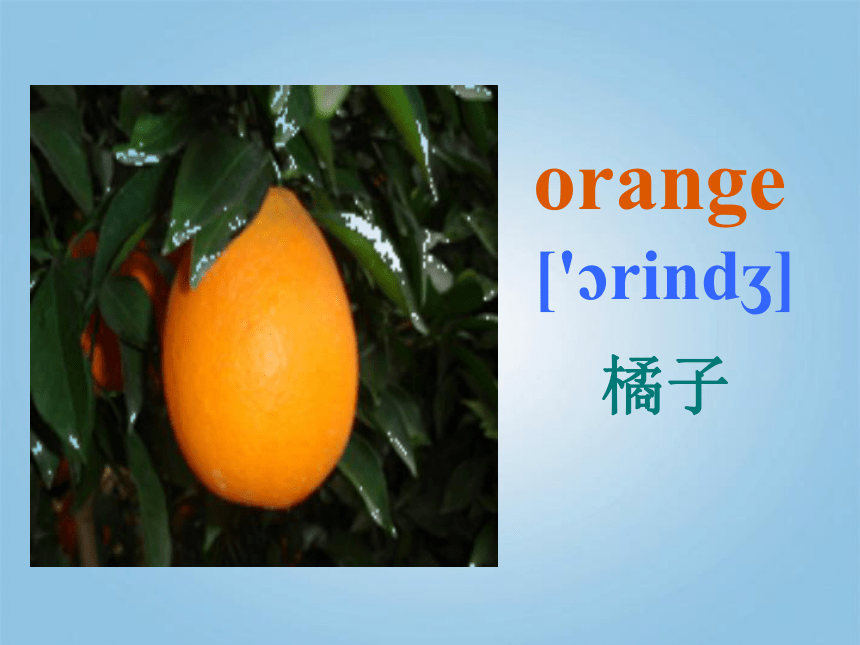

文档简介
课件27张PPT。Lesson 11 What are these?(陕旅版)三年级英语上册课件strawberry['str?:b?ri] 草莓 strawberries ['str?:b?riz]草莓cherry['t?eri] 樱桃 ['t?eriz] cherries樱桃[p??] pear 梨 pears [p??z] orange
['?rind?] 橘子 oranges
['?rind?z] 橘子 peach
[pi:t?] 桃子 peaches
[pi:t?iz] mango
['m??g?u] 芒果 mangoes
['m??g?uz] grape
[greip] 葡萄 grapes
[greips] 葡萄pineapple
['pain?pl] 菠萝 pineapples
['pain?plz] 菠萝 fruit
[fru:t]
水果 一、绝大多数的可数名词的复数形式,是在该词末尾加上后辍-s。 读音变化:结尾是清辅音读[s],结尾是浊辅音或元音读[z]。 例:
friend→friends; cat→cats; style→styles; sport→sports; piece→pieces 二、凡是以s、z、x、ch、sh结尾的词,在该词末尾加上后辍-es构成复数。 读音变化:统一加读[iz]。 例:bus→buses; quiz→quizzes; fox→foxes; match→matches; flash→flashes 三、以辅音字母+y结尾的名词,将y改变为i,再加-es。 读音变化:加读[z]。 例:candy→candies; daisy→daisies; fairy→fairies; lady→ladies; story→stories 四、以-o结尾的名词,如果不是外来词或缩写,就加-es,否则加-s构成复数。 读音变化:加读[z]。 例:
Tomato → tomatoes; potato → potatoes; torpedo → torpedoes; bingo → bingos 反例:
silo→ silos; piano→ pianos外来词); photo → photos; macro→ macros(缩写词)What are these?They’re pears.Oh.Are these peaches?No, they aren’t.
They’re oranges.Yum!Are these grapes?Yes, they are.yes根据图片,编小对话:Thank you!课后作业:练习生词,熟读课本对话!
['?rind?] 橘子 oranges
['?rind?z] 橘子 peach
[pi:t?] 桃子 peaches
[pi:t?iz] mango
['m??g?u] 芒果 mangoes
['m??g?uz] grape
[greip] 葡萄 grapes
[greips] 葡萄pineapple
['pain?pl] 菠萝 pineapples
['pain?plz] 菠萝 fruit
[fru:t]
水果 一、绝大多数的可数名词的复数形式,是在该词末尾加上后辍-s。 读音变化:结尾是清辅音读[s],结尾是浊辅音或元音读[z]。 例:
friend→friends; cat→cats; style→styles; sport→sports; piece→pieces 二、凡是以s、z、x、ch、sh结尾的词,在该词末尾加上后辍-es构成复数。 读音变化:统一加读[iz]。 例:bus→buses; quiz→quizzes; fox→foxes; match→matches; flash→flashes 三、以辅音字母+y结尾的名词,将y改变为i,再加-es。 读音变化:加读[z]。 例:candy→candies; daisy→daisies; fairy→fairies; lady→ladies; story→stories 四、以-o结尾的名词,如果不是外来词或缩写,就加-es,否则加-s构成复数。 读音变化:加读[z]。 例:
Tomato → tomatoes; potato → potatoes; torpedo → torpedoes; bingo → bingos 反例:
silo→ silos; piano→ pianos外来词); photo → photos; macro→ macros(缩写词)What are these?They’re pears.Oh.Are these peaches?No, they aren’t.
They’re oranges.Yum!Are these grapes?Yes, they are.yes根据图片,编小对话:Thank you!课后作业:练习生词,熟读课本对话!
